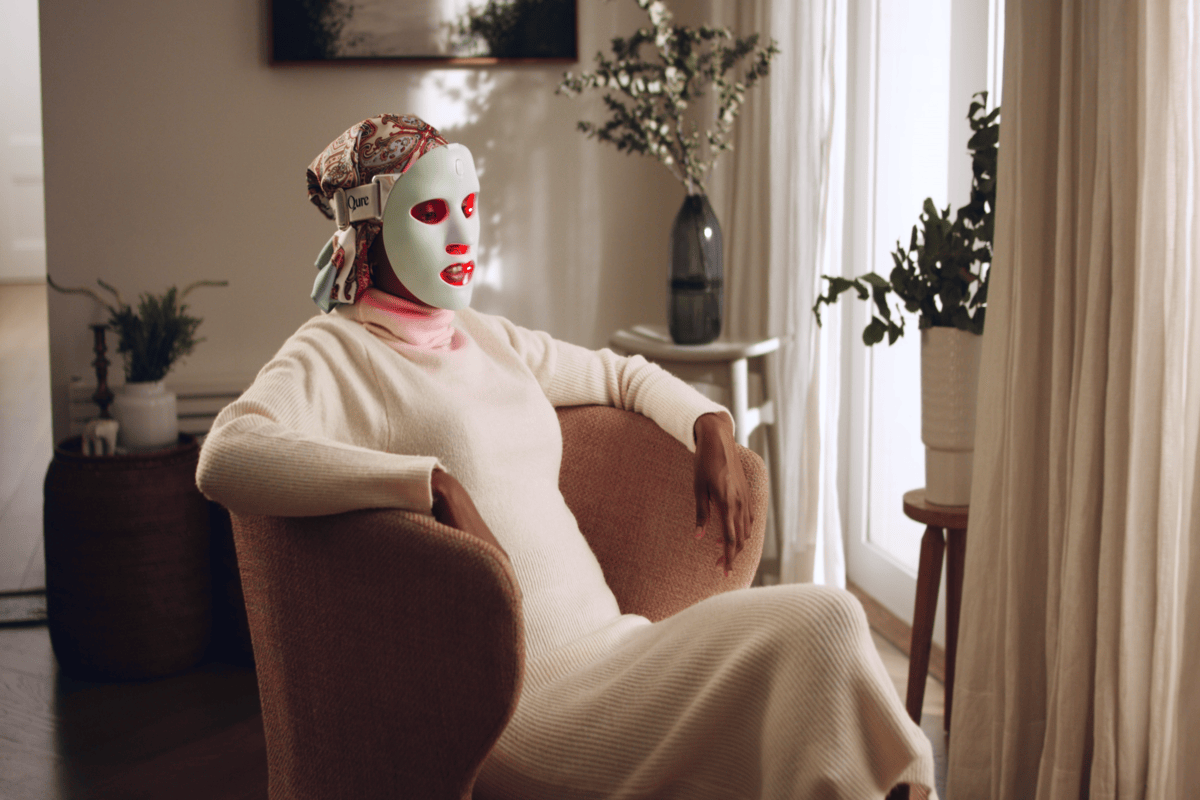Blog > All
Best Red Light Therapy for Wrinkles
Written by Our Editorial Team
6 min read
00
DAYS D00
HOURS H00
MINUTES M00
SECONDS S

Fine lines, deep creases, and a gradual loss of skin elasticity are all natural aspects of the skin's aging journey. While these changes are inevitable, how we respond to them has evolved.
Today, red light therapy stands out as a highly effective, non-invasive tool for minimizing wrinkles and enhancing the skin's youthful appearance, without the need for needles, downtime, or expensive clinic visits.
In this in-depth guide, we'll explore the science behind red light therapy for wrinkle reduction, key technology benchmarks, the best red light therapy for wrinkles, and practical strategies to seamlessly integrate this treatment into your existing skincare ritual.
What this article covers:Red light therapy, also referred to as low-level light therapy (LLLT), utilizes precise wavelengths of red and near-infrared light to penetrate the skin and energize cells.
This cellular boost is primarily achieved by stimulating the mitochondria (our cells' natural energy centers) to produce more ATP (adenosine triphosphate), the energy currency required for regeneration and repair.
When applied consistently, this process supports the skin in multiple ways:
Red light therapy is not just a surface treatment. It addresses the biological root causes of aging, making it a powerful companion to both preventative care and targeted wrinkle treatment.
Wrinkles develop from a combination of intrinsic (natural aging) and extrinsic (environmental) factors. These include UV exposure, collagen degradation, repeated facial expressions, and moisture loss. Red and near-infrared light therapy counteract these effects by:
Over time, users often experience firmer skin, fewer fine lines, reduced wrinkle depth, and a smoother surface texture. When paired with other anti-aging ingredients like retinol or peptides, results may be amplified.
Not all red light devices are created equal. To ensure safety and efficacy, especially for wrinkle reduction, consider the following criteria:

Not all red light therapy devices are created equal, especially when it comes to targeting wrinkles. The best-performing options combine clinically proven wavelengths with user-friendly design and practical features that encourage consistent use.
Below, we've highlighted four standout devices known for their efficacy, safety, and real-world performance across different skin concerns and lifestyles.
Qure's Q-Rejuvalight Pro red light mask is a high-performance LED mask designed for users seeking precision, versatility, and personalization.
Featuring five clinical-grade wavelengths (including red (633nm), near-infrared (830nm), blue (415nm), amber (590nm), and deep red (660nm)), this mask is built to treat a wide range of skin concerns with professional-level results.
Omnilux Contour Face is a well-established red light therapy mask commonly used in both clinical and home settings.
It features medical-grade LEDs at 633nm (red) and 830nm (near-infrared), targeting key signs of aging such as fine lines and reduced elasticity. Its flexible silicone design ensures even light distribution across the face for consistent treatment.

Developed by a dermatologist, the DRx SpectraLite FaceWare Pro combines red and blue light therapy in a hard-shell format.
With 100 red LEDs and 62 blue LEDs, it offers three preset modes (anti-aging, anti-acne, or both), allowing users to address multiple skin concerns with one device.
The HigherDose mask blends functionality with a wellness-inspired aesthetic. Combining red and near-infrared light, it aims to support skin elasticity and natural glow, all within a cordless, ultra-light design that fits easily into a busy lifestyle.
Red light therapy works best when it becomes a habit. The best time of day for red light therapy depends on your schedule and your skincare goals. Morning sessions can energize the skin and boost product absorption, while evening use supports nighttime repair and relaxation.
Here's a sample anti-aging LED skincare routine:
Avoid layering occlusive products before treatment, as they can block light absorption. Post-treatment, use nourishing ingredients to support skin recovery. Check out this guide for the best time of day for red light therapy to create a tailored routine.

Yes. When used as directed, red light therapy is safe for all skin tones and types. Devices with FDA clearance provide an added level of safety assurance.
Aim for 3–5 sessions per week, depending on the device and your goals. Follow manufacturer guidance for optimal results.
Initial improvements in texture and tone may appear within 4–6 weeks. Deeper wrinkle reduction typically becomes more noticeable around the 8 to 12-week mark.
Side effects are rare and mild, such as temporary warmth, dryness, or redness. Avoid overuse and always follow safety instructions.
Choosing the best red light therapy for wrinkles is about more than specs. It's about finding a device that fits your life and evolves with your skin. Whether you're addressing early signs of aging or supporting long-term skin resilience, red light therapy offers a proven path toward firmer, smoother, more radiant skin.
From multi-functional tools like the Qure Q-Rejuvalight Pro red light mask to focused, dermatologist-trusted options like Omnilux, the key is consistency. When the technology is designed to support your goals and routine, visible transformation becomes not just possible, but practical.
Ready to invest in your skin's future?
Discover how Qure Skincare's clinical-grade innovation brings personalized, at-home anti-aging care to your everyday ritual.
Most Popular Posts